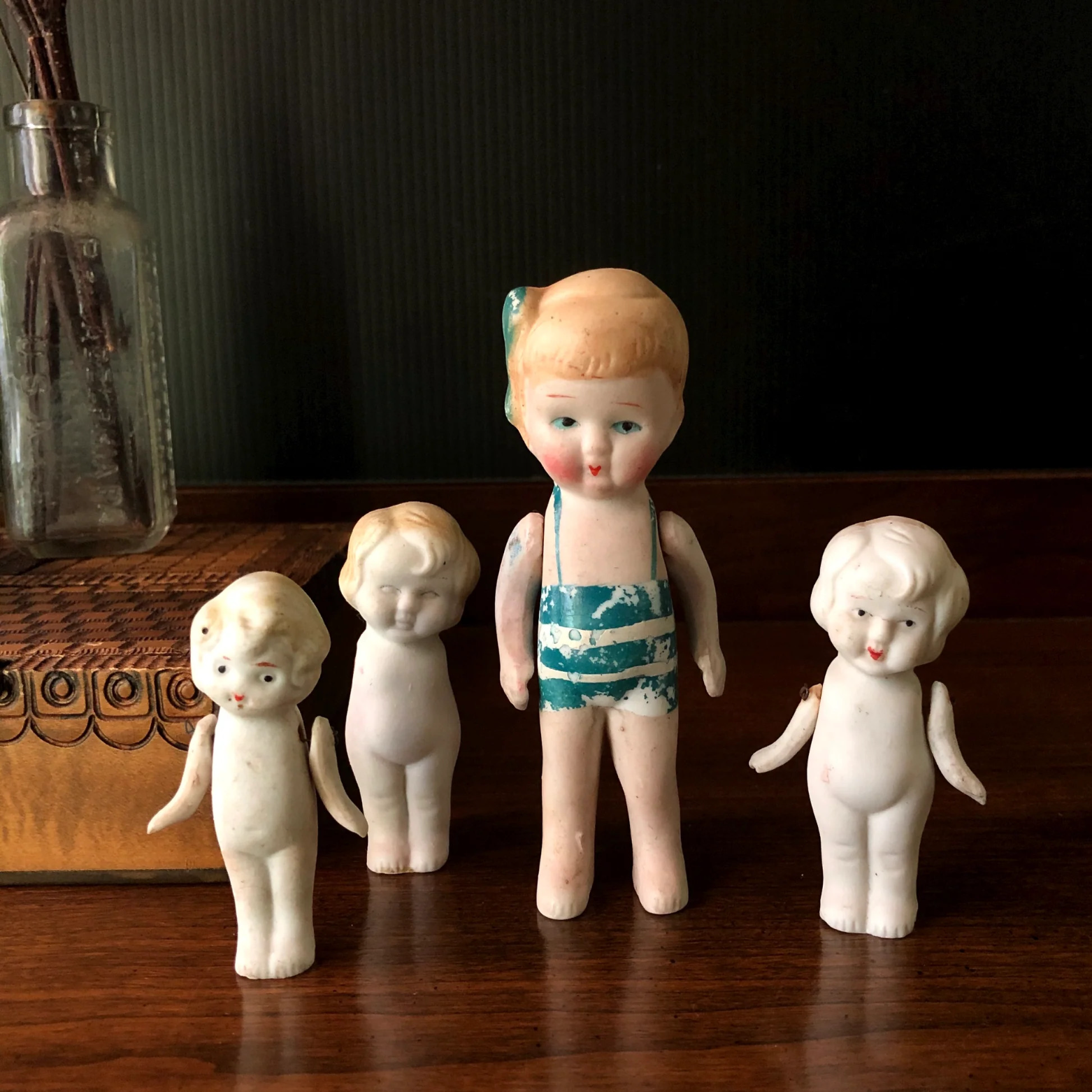

Bisque is a French word that translates into dry cake (Meissner, 1997). In this context however, bisque refers to unglazed clay or porcelain that was used to make dolls (Andrew, 2022). It transforms into a soft, dull, matte finish, which resembles real skin, unlike the shiny porcelain dolls (Hoke, 1954).
Their appearance was more realistic than that of other dolls. It made them more appealing to children (Andrew, 2022).
The unglazed clay is very fragile, hence, the dolls need to be handled with care. Usually, only the head was made out of bisque; the limbs and body were made out of papier-mache, cloth, or even wood (Meissner, 1997).
They gained popularity in the 19th and 20th centuries (Andrew, 2022). The most famous bisque doll factories were located in France and Germany: Kestner, Steiner, and Simon & Halbig, Jumeau (Hoke, 1954; Andrew, 2022).
Nowadays, bisque dolls are considered to be a valuable collectible antique object, with prices varying from a hundred to a couple thousand euros per doll.